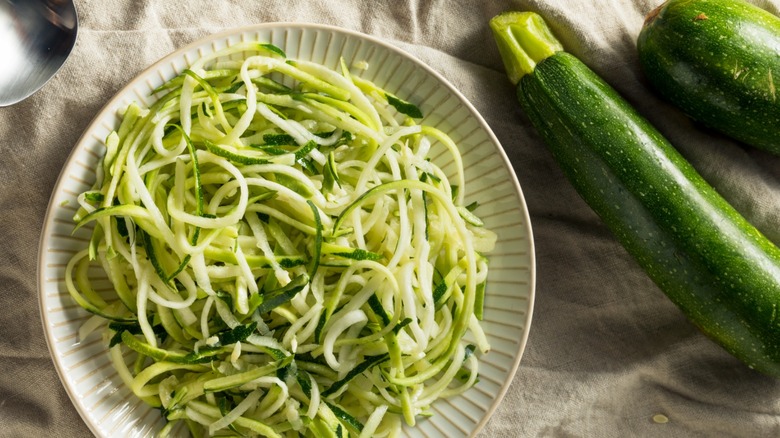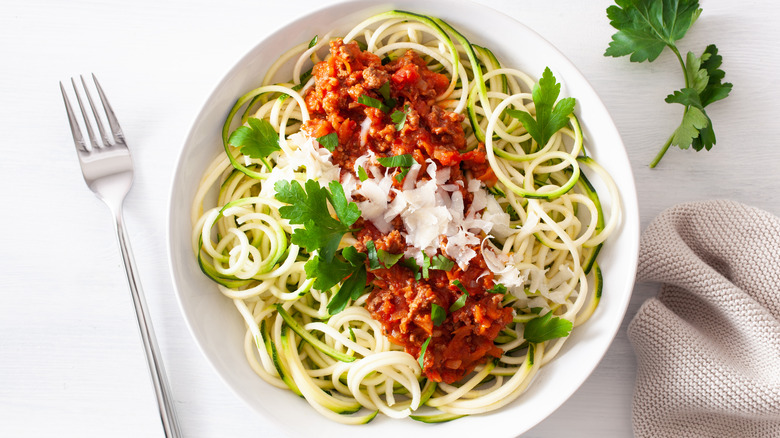When Spiralizing Zoodles, Choose Smaller Zucchini For Less Watery Results
Zucchini noodles, aka zoodles, are one of those dishes that you either love or hate. Although zoodles do have a few things going for them (such as helping to up your intake of vegetables and acting as an easy gluten-free alternative to pasta), they do have some drawbacks. Most obviously, zoodles can result in an extremely soggy and bland dish. But, what if we told you that these downsides were largely dependent on the size of the squash that you spiralize? Spoiler alert: The biggest zucchini isn't always the best.
Zucchini is over 90% water. With such a high moisture content, it's no wonder that the vegetable is likely to expel a significant amount of water when used in various culinary applications. That said, some zucchini contain less moisture than others. Italian heirloom varieties like the Cocozelle tend to be denser and drier than the standard green zucchini you find at the supermarket.
However, choosing a less watery zucchini is often just a matter of selecting the right-sized squash. Since the vegetable develops tougher skin, bigger seeds, and more watery flesh as it grows on the vine, larger zukes should be avoided if you're seeking to spiralize. Instead, a smaller zucchini (about 6 to 8 inches in length) is the ideal choice for zoodles. In addition to reducing the degree of sogginess, a small- or medium-sized squash will also have a more pronounced flavor, guaranteeing a tastier outcome.
Even smaller zucchini need to be properly prepped
A petite zucchini won't solve all your problems when it comes to the risk of sogginess. While you can reduce moisture with your squash selection, don't forget that regardless of the size, the vegetable is largely composed of water. That's why it's wise to take further action to avoid limp and watery zoodles.
Once zoodles have been spiralized, salting and straining are essential to help remove excess moisture before cooking. Even after a brief saute (lengthy cook times turn zoodles to mush), strain them again so they are as dry as possible before adding sauce. If you're struggling with soggy zoodles no matter what, then you might want to switch up how you prepare them. For example, keep them crisp by serving them raw in a fresh salad or add them to an equally moisture-dense dish,such as swapping them into your favorite ramen recipe.

